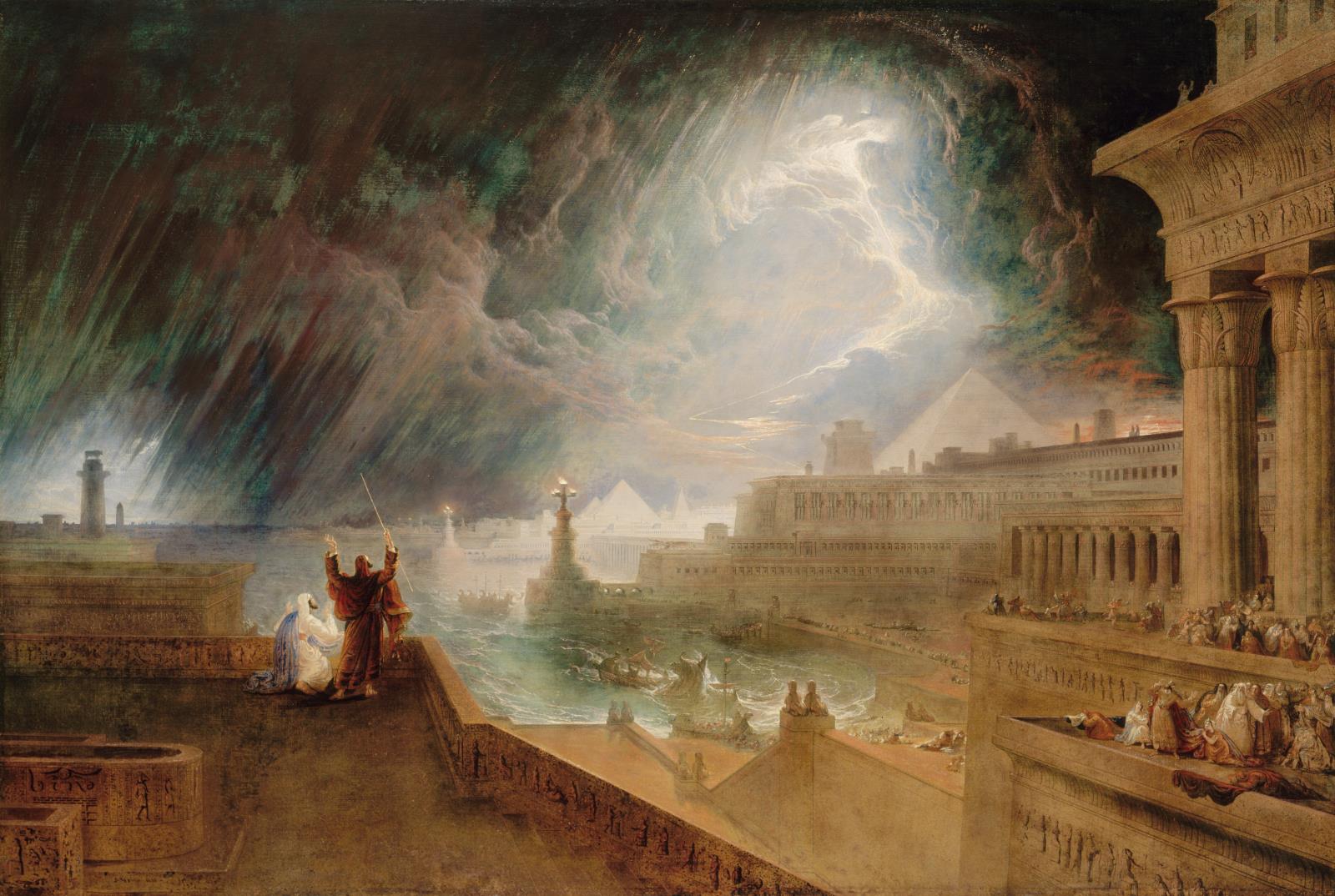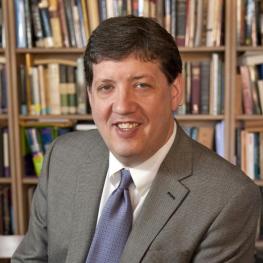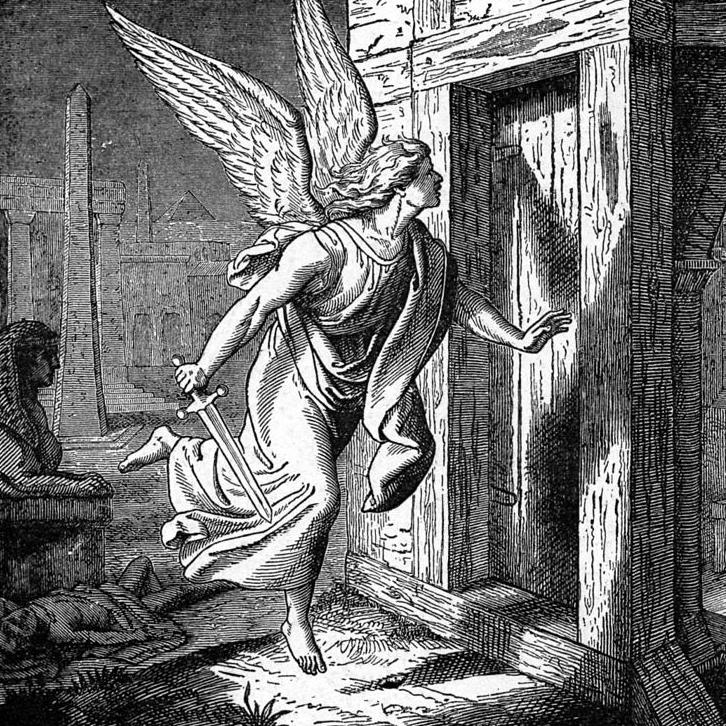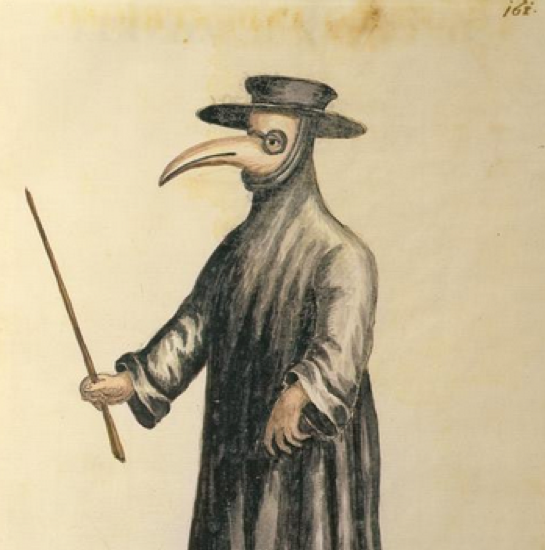The Ninth Plague
The coronavirus has imposed mistrust, self-isolation, and a narrowing of our social worlds, but the Exodus story and the Seder provide useful models for moving on.

In a recent op-ed piece in the New York Times, columnist Elisabeth Rosenthal poses a question that is becoming ever more pressing as the coronavirus crisis continues: how can we reconnect to other people without being able to tell whether it is potentially lethal to get too close to them?
There are many reasons it is crucial to be able to know for certain who has the virus or not, Rosenthal points out. If people were able to determine whether they had already had the disease and were now likely to be immune, they could volunteer to help others and know that it was safe to return to work. Family life, the economy, cultural institutions, government, education—none of it can fully resume if we do not know whether it is too risky to interact in person again, and yet— at least as of now—very few of us in the United States have access to the requisite testing.
The problem that Rosenthal identifies is not just an immediate public health challenge. If it continues long enough, it will become a major psychological and ethical challenge as well. Anticipating so much of our current plight, Albert Camus’ novel The Plague envisions what might happen to our society, what perhaps has already begun to happen. Everyone becomes trapped in the prison of their homes. People begin to lose their ability to share their sorrows with each other, to the point of giving up communication altogether. Neighbors stop trusting each other. No one can count on anyone else for help.
The world I personally inhabit has not come close to deteriorating this much, but I was very surprised the other day at how alarmed and suspicious I was when our doorbell rang unexpectedly. And I have it relatively easy. Camus’ description likely approximates what others are experiencing already, and as this situation stretches on, one cannot help but worry that this is the future we are all headed towards.
The world was not the same after AIDS and after 9/11, far more distrustful than before, and the challenge of restoring trust is even graver now given the global scale of the pandemic and the possibility that the virus might return. Independent of what the government or health experts recommend as a good time to return to school, work, or synagogue: the question of when it will feel safe to go near people may persist for some time. There are no answers right now; and some of us, I fear, may emerge from this ordeal never fully able to trust the world again.
I write about this situation in this context because it poses distinctive challenges for Jews who depend so much for their collective life on social interaction. Prayer, bar mitzvahs, weddings, mourning, learning, summer camp—so much of Jewish life, religious and secular, depends on interpersonal interaction, on our being able to trust that it is safe to be in the presence of others, and that trust is being decimated. While many Jews have been very adaptive, moving online, such improvisation is not available to everyone, nor is it sustainable in the long-run.
As a scholar of Jewish studies, I have been wondering what can be learned from Jewish history, tradition, and culture about how to rebuild the relationships of trust in a post-coronavirus world, though this is a difficult time to try to approach a question from an academic perspective. My research is limited by the fact that I can no longer go to the library—an institution that also depends on trust and face-to-face interaction to operate. Fortunately, I did happen to have at home a book that is relevant to the question, a collection of essays about mistrust authored by an Austrian scholar named Florian Mühlfried, and my thinking about this challenge begins there.
One of Mühlfried’s main arguments is that mistrust is not necessarily a problem that demands a solution. We evolved the ability to mistrust precisely because it serves constructive functions, as we are learning the hard way through this current crisis. By developing new habits of mistrust, we are preventing the spread of disease.
But such research also underscores how destructive mistrust can be when it becomes too deeply rooted in a group or goes on for too long. It can impose too much isolation, too much detachment, too much suspicion of outsiders. The challenge for communities in that kind of situation is not necessarily how to move from mistrust to trust because mistrust remains useful but rather how to find a way to balance between them, to allow for trust to exist alongside mistrust.
Mühlfried offers some suggestive insights grounded in anthropology. In one of his essays, for example, he focuses on how certain communities find a way to build relationships with those they do not trust. An example is the famous code of hospitality that governed pre-modern Mediterranean societies like the Israelites described in the Bible, where people felt a sense of duty that called for welcoming strangers unconditionally into one’s home despite the risk that doing so posed—inviting them in and offering them food and shelter without knowing anything about them or their intentions or being able to rule out that they might bring harm.
Hospitality in this sense does not involve trusting the stranger or turning him into a friend. The stranger remains just that—unknown, difficult to judge, potentially dangerous—but the society calls on the host to suspend mistrust. It is not easy to take this kind of risk—this is what is so special about the hospitality that Abraham shows, and in fact, he and others in Genesis often find themselves betrayed by their hosts—but it also sometimes allows for something constructive to emerge even in the absence of trust: a conversation, a gift, the building of a lasting relationship.
I had such research in the back of my mind as I prepared for Passover this year, and it helped me to see something about this holiday that I had never noticed before, a lesson latent in its backstory that may be helpful to Jews when the time comes to reconnect in person.

Because Passover this year is coinciding with the terrible peak of coronavirus infections and deaths in the United States, many commentators have felt compelled to make connections to the story of the Ten Plagues, recited during the Seder. Especially prominent were comparisons with the last and most terrible of the plagues, the slaying of the first born, which left Israelite families huddled in their homes while the angel of death did his work around them. My preoccupation with the problems of mistrust focused my attention on another of the plagues—the ninth plague, the plague of darkness—and, at least according to one way of reading it, it is a more apt precedent for our current plight.
The plague of darkness stands out from the others, among several reasons, because its effects are not physically threatening in the same way. The darkness was thick enough to touch, but it does not afflict the bodies of the Egyptians or their animals in the way that lice or boils did, nor does it threaten the water and food supply as happened when God turned the waters of the Nile into blood, summoned pestilence against the cattle, and sent hail and locusts to destroy Egypt’s crops.
Some scholars have suggested that the darkness was not atmospheric but some kind of mass hysterical blindness that swept over the Egyptians in a time of fear. Others have speculated that the experience was so terrifying that in a proto-version of the story from the time before the book of Exodus was composed, it was the ninth plague that was the last of the plagues, and the most destructive. Whatever one makes of such views, we can see from the biblical account that, in contrast to the other plagues, the effects of the ninth plague were social and interpersonal: the darkness cut people off from one another: “No one saw his fellow or was able to get up from their place for three days” (Exodus 10:23).
Some commentators believe that the ten plagues were designed to fit the sins of the Egyptians, their idolatry, their materialism, their excessive appetites. I do not know if the author of Exodus had such a logic in mind for all the plagues, but it works for the ninth one. The Pharaoh’s first words in the story reveal that his abuse of the Israelites was motivated by his fear of them as strangers: “The people of Israel are too great and mighty for us…they may join our enemies and fight against us” (Exodus 1: 9–10). The ninth plague literalizes this mistrust and turns it against the Egyptians, creating an atmosphere of self-isolation where it was impossible to see beyond oneself.
The darkness ends after three days, but Pharaoh never finds a way beyond his own mistrust. Following the plague, he summons Moses to tell him that he never wants to see him again, to which Moses responds, “You speak correctly. I will not see your face again” (Exodus 10:28). To me, it is not a coincidence that Pharaoh’s language echoes the language of not seeing used in the description of the ninth plague—the verbal link between the experience of the darkness and Pharaoh’s language after the plague suggests that the darkness had not ended for him: he would continue to live in a world where he was unable to see his fellows.
But what about the Israelites? The Book of Exodus tells us that they did not experience the darkness, but other texts suggest it engulfed them too. In Psalm 107, a psalm that recounts the plagues, we learn that the Exodus involved deliverance not just from slavery but also from “darkness.” In this version of the story at least, there is the suggestion that Israelites too had experienced the ninth plague but that they had made it out, emerging from the self-isolation and paralysis that the situation had imposed. At least, I’d like to believe that as I wonder during the current Passover when we will all emerge from this darkness.
We will never know how the Israelites were able to emerge from the ninth plague, but the Exodus story may hold a clue for we can do so now, how we can move on from the suspicion, the self-isolation, and the narrowing of our social life that the coronavirus imposes. The model from how to get from here to there is none other than the Seder itself.
The Seder constitutes what Mühlfried might call a game of mistrust, a ritual that plays with the relationship between trust and mistrust. It can be considered a game because the Seder has many qualities of the game—it follows a script; people are assigned various roles; there is a light-hearted mood to much of the evening—but the ceremony also addresses serious issues, including how Jews relate to those beyond their families, and its customs, stories, questions, and songs exert a powerful influence over how they think about themselves throughout the year.
For Mühlfried, games of mistrust are ways of honing the skill of being distrustful, which in his understanding requires a lot more effort and vigilance than trusting people does, and one can read the Passover Seder in that way: it models how to survive in a world of hostile enemies. But it also gives one opportunities to practice how to overcome one’s mistrust of outsiders, and that is the part of the experience that is relevant here.
Passover brings together family members united by shared ancestors and memories of a common origin, people who already know each other, and it reminds them of the foundational experience of slavery and liberation that they share in common. Into this group, however, it also invites the stranger, not foreigners necessarily though some would understand it in that way, but ones who come from outside the home and from beyond one’s kinship group. The ritual provides many reminders of how scary such outsiders can be. The Egyptians symbolize danger and fear, and there are moments during the Seder that reinforce such feelings. But it also instructs its participants that there is another way to relate to people we do not know or trust: we were once strangers ourselves, it reminds us, and for that reason, there ought to be a place in our lives for strangers who come to us from outside. For some Jews today, this latter theme—welcoming the stranger into our midst—has become a very important part of the Passover experience.
The Seder’s shuttling between mistrust and embracing the stranger is newly relevant at this present moment, a potential model for how to transition from the ethos of mistrust and self-isolation which the pandemic is instilling back into a world of connecting with strangers.
According to the medieval commentator Rashi, the ninth plague lasted not three days but six—three in which people could not see each other, and three in which they were powerless to rise up from their places. What will happen after the coronavirus pandemic can be divided into two stages as well: one public, the other more private. First will come the all-clear from public health officials and experts, the announcement that it is safe again to return to work, to school, or to the store. Maybe that will happen a month or two from now, or maybe we will have to wait until a vaccine is developed. But whenever the official reprieve happens, there will still follow another, more personal period of darkness for many of us, the second three days, as it were, where we may still be trapped by our own anxieties, suspiciousness, and newfound habits of self-isolation.
I am talking about the moment when we decide to go to the dentist again, or get a haircut, or shake a hand—situations where we need to be close to strangers and reembrace face-to-face interaction. At such moments, privately, each of us will have to make a decision “to rise up from our places,” to risk unexpected intimacy with strangers even though the possibility of contagion— and our fears—persist, and such a decision may not come easily for many of us.
The Seder, I am suggesting, offers guidance for how to navigate this moment, not a timetable but a model for a new ritual of reintegration, be it religious or secular. The transition back, it suggests, may become easier if it involves a gathering where we can reunite with family but also welcome strangers too. We should use this gathering to remember that we were also once strangers, an object of mistrust, and that we are obligated to be open to others as we would wish others to be open to us. And then, as a final way of symbolizing our transition back into society, the gathering should end, as the Seder does, with someone opening the door and letting the world back in. Passover works every year to remind Jews of how they escaped from slavery, moving its participants from oppression to redemption over the course of the Seder. Something like that experience, activated at the point it becomes safe to reenter a world of interacting with strangers, may also be able to help bring Jews out of our current plague of self-isolating darkness.



